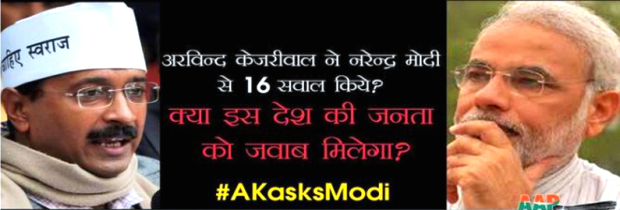Kejriwal Vs Modi: Fact vs Non-Fact
Aam Aadmi Party (AAP) leader Arvind Kejriwal recently posed 16 questions to Gujarat Chief Minister Narendra Modi. We decided to do a fact check on some of these questions raised by Kejriwal on the Gujarat model of economic development.
Agricultural Growth
How do you claim 11% agriculture growth rate when statistics released by your Government for 2012/13 indicate that it has fallen to 1.18%?
It seems that Kejriwal has confused the national figureof 1.8% growth of agriculture with the state growth of the agriculture sector. In fact, agriculture sector growth in Gujarat was actually 11% in 2012-13.
According to Gujarat Govt. stats, agricultural output has fallen from Rs 27,815 crore in 2006/07 to Rs 25,908 crore in 2012/13.
As far as agricultural output is concerned, during the period 2004-05 to 2011-12(Q), GSDP for agriculture sector, including animal husbandry, has increased from Rs 26,746 crore to Rs 45,085 crore at 2004-05 (constant ) prices.
Farmer Suicides
Farmers are unhappy and are committing suicide. In recent times, 800 farmers have committed suicide in Gujarat. Why?
The following graph shows the number of deaths in Gujarat from the 2010 to 2012:
Data from National Crime Records Bureau (NCRB) shows that farmer suicides have been increasing over the years. It can be seen that the number of suicides was 523 in 2010, and it increased to 578 in 2011 and then declined to 564. Though there has been an increase in farmer suicides, the claim made by Kejriwal of 800 suicides does not match the data of 2012. However since no proper time frame was mentioned in his question to Modi, it is possible that Kejriwal may have quoted an accumulated figure of more than one year.
PHCs
Primary healthcare centers in many villages are shut. Basic medicines are not available in many district level hospitals. Why?
The number of primary healthcare centers (PHCs) has increased from 1,114 in 2010-11 to 1,158 in 2011-12. Even though the Gujarat Government is not part of the centrally-sponsored Jan Aushadi programme, the Government has been investing money in making available free and affordable medicines. The Gujarat Government runs a scheme that provides medical aid for buying medicines to poor families (with an income limit of Rs 12,000) for different diseases. The graph below shows the allocation and the reach of the programme and physical achievement of the scheme from 2010 to 2012:
It can be seen that even though the Government has been reaching people with the scheme, the number of beneficiaries has been coming down, from 13,170 in 2010-11 to 7,473 in 2012-13.
Education
There are only three teachers per 600 students. Why is the state of education in Gujarat so poor?
Let us look at the pupil-to-teacher (PTR) ratio for different levels of education:
The claim of 600 students per teacher does not seem true. Data from District Information on School Education (DISE), a division of the Union Human Resources Ministry, shows that the Pupil-Teacher Ratio (defined as total enrolment in schools divided by total teachers) is a teacher for 31 students in primary and upper primary schools. In secondary schools, there is a teacher for 34 students, and similarly there is a teacher for 29 students in higher secondary.
Rural Electrification
You claim electricity in every village. Your government is sitting on over 4 lakh applications from farmers for electricity connections.
Gujarat has electrified 90% of its households while 84% of its rural households have electricity.
Gujarat Electricity Regulatory Commission (GERC), in one of its proceedings, has mentioned that there are more than 3 lakh connections pending for agricultural purposes with the commission.



